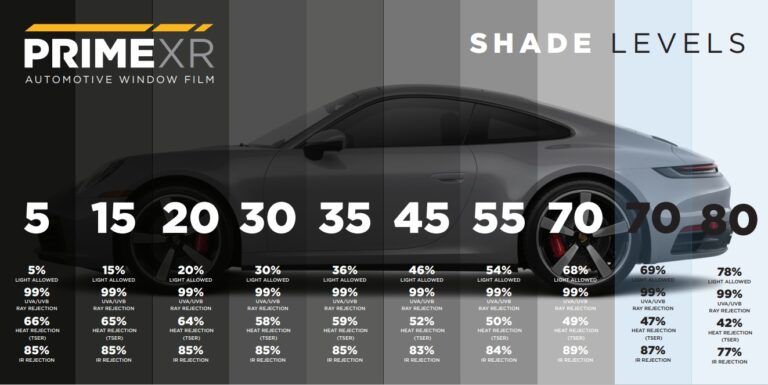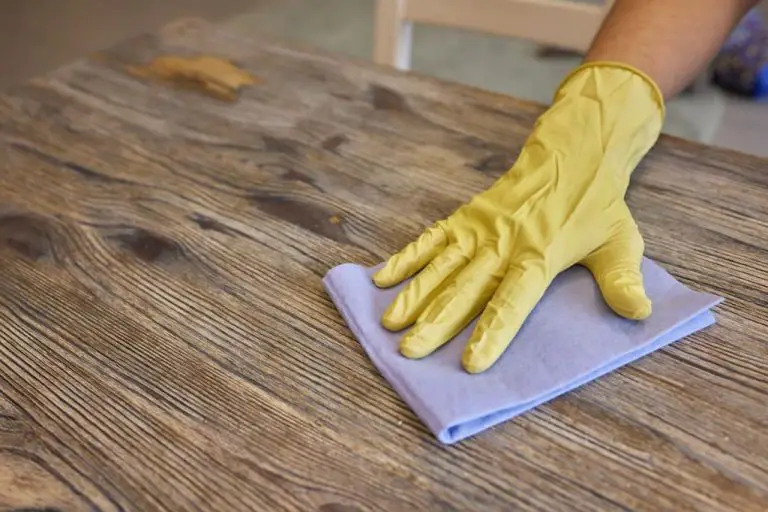Is Ceramic Tint Better Than Regular Tint?
What is ceramic window tint?
Ceramic window tint contains microscopic ceramic particles that are integrated into the tint film. These ceramic particles provide additional benefits compared to traditional dyed window films. According to Chicago Auto Pros, ceramic tint films often have a higher price point than regular tints but provide increased durability, heat rejection, and UV blocking capabilities.
The ceramic particles in the tint help block more of the sun’s infrared rays, reducing heat transmittance through the windows. This keeps vehicle interiors cooler and reduces glare. Ceramic tints also provide enhanced protection against UV rays compared to standard films. The ceramic particles help block 99% of UV light from entering the vehicle according to Premier Detailing and Wash.
In addition, the ceramic layer provides increased durability and scratch resistance. Ceramic particles help strengthen the film and prevent fading or discoloration over time. The tint maintains its appearance and performance longer than traditional dyed films.
What is regular dyed window tint?
Regular dyed window tint, also known as dyed or non-metalized window tint, is made of dyed polyester film with an adhesive backing that sticks directly to car windows. This type of tinting film has been around for decades and is the most common and affordable option for basic heat and UV ray rejection.
Dyed window tint gets its name from the fact that the polyester film is saturated with dye to create the darkened effect. The dye helps block some infrared radiation from entering the car and provides a level of UV protection as well. However, dyed films aren’t able to block as much heat and UV compared to more modern metalized films (Source). Dyed tint films typically cost a few hundred dollars to install and come in shades ranging from very light smoke to limo blackout.
Heat rejection
One of the key differences between ceramic and dyed window tints is the ability to reject heat from sunlight. Ceramic tints are far superior at blocking infrared light and radiation from entering the vehicle. According to https://ceramicgaragemodesto.com/ceramic-window-tint-versus-regular-window-tint/, ceramic tints can reject up to 60-80% of solar heat, while dyed tints only reject around 50% at most.
This increased heat rejection capacity makes ceramic tints ideal for hot climates. By keeping UV rays and heat out, ceramic tints can reduce interior vehicle temperatures by up to 30-50 degrees Fahrenheit. This keeps passengers cooler and can also reduce air conditioning usage. Dyed tints simply cannot match this level of heat rejection performance.
Lower interior temperatures provide a more comfortable driving experience and reduce heat-related risks. In very hot conditions, severe heating of car interiors can cause burns, dehydration, and unsafe driving situations. The unparalleled heat rejection of ceramic tints makes them a smart choice for drivers in hot regions concerned about interior heat levels.
UV Blocking
One of the major benefits of ceramic tint over regular dyed tint is its superior ability to block UV rays from the sun. According to The Truth About Ceramic Tint Vs Regular Window Tint, ceramic tint can block up to 99% of UVA and UVB rays that can damage skin and cause fading, while regular dyed films typically block 50-90% depending on darkness level.

The enhanced UV blocking capabilities of ceramic tint come from the nanoparticle layer in the film that reflects and absorbs more UV light. This helps provide better protection from sun damage for vehicle passengers and interiors. Blocking UV rays is crucial to prevent premature fading and cracking of dashboards, leather, and plastics. It also protects skin from sunburn and reduces UV exposure that can lead to skin cancer over time.
Visibility and clarity
Ceramic window tint tends to have higher visible light transmittance compared to traditional dyed films. Light transmittance refers to the percentage of visible light that can pass through the tint – the higher the number, the clearer the film. Ceramic tints often have light transmittance between 50-80%, while dyed films are usually around 35-50% (source: https://thetintguy.com/ceramic-tint-vs-regular-tint/).
The higher light transmittance of ceramic films allows more clarity when looking out through the tinted windows during the day. Objects appear clearer and colors are brighter. At night, the visibility difference is even more apparent. Ceramic tint allows better visibility when driving at night due to the higher light transmittance, while dyed films can make things appear darker and reduce visibility (source: https://ceramicgaragemodesto.com/ceramic-window-tint-versus-regular-window-tint/).
Overall, ceramic window tint provides significantly better optical clarity and visibility both day and night compared to traditional dyed window films.
Durability
Ceramic tint is significantly more durable and scratch-resistant than regular dyed tint. Ceramic tint films are constructed using an extremely hard ceramic layer that protects against scratches, debris, and general wear and tear (Source 1). In contrast, dyed films lack this protective ceramic layer and can be prone to scratching, fading, and degradation over time.
For example, tests have shown that ceramic tints can withstand abrasion and retain optical clarity over 10x longer than dyed films before signs of scratching appear. The increased hardness and scratch resistance allows ceramic tints to better maintain their appearance and performance over many years (Source 2).
This durability is especially important for window tint longevity in areas with extreme weather and abrasive conditions like high heat, intense sunlight, sand, and dust. The ceramic layer helps ceramic tint stand up to these elements without degrading or scratching as quickly as regular tint.
Cost comparison
There is a significant upfront cost difference between ceramic and traditional dyed film tint. According to The Tint Guy, regular dyed film tint can cost around $250 for a basic sedan, while ceramic tint for the same vehicle runs $400 and up. The higher price of ceramic is due to the more complex manufacturing process and materials required.
However, when you factor in lifespan, ceramic tint may actually save money in the long run. Quality ceramic tint is warrantied to last 7-12 years without fading, cracking or bubbling. By comparison, standard dyed tint typically lasts 3-5 years before needing replacement. So while more expensive at first, ceramic tint may only need replacing once a decade rather than every few years.
There is also the question of resale value. Many buyers prefer and will pay more for vehicles with ceramic tint. By investing more upfront in ceramic, you are adding value and appeal to the vehicle that can be recouped later. This means the true cost difference between the two options is lower than it appears.
In summary, while more expensive initially, ceramic tint offers a stronger ROI through greater longevity, retention of appearance and resale value over time. For those planning to keep their car longer term or who want optimal performance, the higher price of ceramic tint is well worth it.
Limitations of ceramic tint
While ceramic tint has many advantages, it also comes with some limitations to consider before installing it on your windows.
One drawback of ceramic tint is that it can be more difficult to install yourself compared to traditional dyed film. Ceramic tint is thicker, stiffer, and more rigid than regular tint. This makes DIY installation more challenging, especially for beginners. It’s easy to crease or bubble ceramic tint if you don’t apply it perfectly. For this reason, professional installation is highly recommended for ceramic tint.
Improper installation can also lead to bubbling issues with ceramic tint over time. If the film isn’t applied smoothly to the glass or if there is debris or trapped moisture underneath, you may get unsightly bubbles. A professional installer has the experience to apply ceramic tint flawlessly to avoid bubbling.
Additionally, some types of ceramic tint can interfere with radio reception, causing reduced AM/FM and cellular signals. Metallic ceramic films in particular can disrupt signal transmission. Non-metallic ceramic options are available that don’t have this problem.
While the benefits often outweigh the downsides, it’s important to be aware of these limitations before deciding if ceramic tint is the right choice for your car or building windows.
Ideal applications
When deciding between ceramic and dyed window tint, consider the main advantages of ceramic tint and whether they address your priorities.
Ceramic tint is recommended for the following applications:
- Maximizing heat rejection – Ceramic tint blocks more infrared light, keeping interiors cooler (Metropolitan Tinting).
- Increased UV protection – The ceramic layer blocks over 99% of UV rays from entering the vehicle (Ceramic Pro).
- Reducing glare – Ceramic particles diffract and reflect light, reducing eye strain from glare (Rivian Forums).
Dyed tint may be preferable in situations where:
- Cost is the priority – Dyed tint is significantly less expensive.
- Appearance and darkness are desired – Dyed tint allows very dark shades.
- Quick installation is needed – Dyed film is easier to apply.
Overall, ceramic tint offers increased performance and is ideal for those wanting maximum heat rejection and UV protection. Dyed tint provides an affordable option when darkness and cost savings are the priorities.
Conclusion and recommendation
In summary, there are several key differences between ceramic and traditional dyed window tints:
- Ceramic tint provides significantly better heat rejection, blocking up to 97% of infrared rays compared to 50-60% for dyed films. This helps keep interiors cooler.
- Ceramic films offer higher clarity and less haze or distortion of views. Objects appear sharper through ceramic tint.
- Ceramic tint films are more durable and longer-lasting. They resist fading, peeling, and cracking better than dyed films.
- However, ceramic tint is also significantly more expensive, often 2-3 times the price of dyed window tint.
Given the improved performance and longevity, ceramic tint is worth the extra investment for vehicles in hot, sunny climates where heat rejection is a priority. It’s also ideal for drivers who want better optics and plan to keep their car more than 5 years. However, for short-term use or in temperate climates, dyed film tint may provide adequate performance at a lower cost. Ultimately, the choice comes down to individual priorities and budget.



